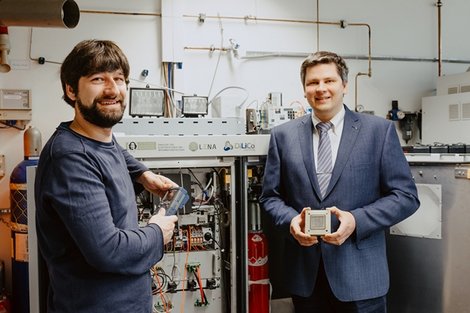Fuel cell becomes energy storage device

Scientists at Otto-von-Guericke University Magdeburg are developing an innovative fuel cell which can be used to generate both electricity and heat from hydrogen and convert excess electrical energy back into hydrogen. In this way, in the future, it will be possible to store electricity from wind and solar energy on a cheaper and more flexible basis and make it available again as required.
In the scope of the grant of 1.3 million Euros from the Federal Ministry of Economics and Energy for the RE-FLEX Research Project scientists from the Faculty of Electrical Engineering and Information Technology at the University of Magdeburg are working on extending the function of the fuel cell as a supplier of energy with the possibility of energy storage.
“The goal is energy converters that combine the function of a fuel cell and an electrolyser in the same system,” explained Project Coordinator Prof. Martin Wolter of the Institute for Electrical Networks and Renewable Energy at the University. “This means it is possible to store electrical energy in the form of hydrogen by electrolysis and to convert hydrogen back into electrical and thermal energy during fuel cell operations. As the same cell stack is used for both operating directions, the system can be designed much more cost-effectively than individual fuel cell and/or electrolyser units.”
Project partners are the Fraunhofer Institute for Chemical Technology ICT as well as the companies balticFuelCells GmbH and inhouse engineering GmbH.
"Assuming the implementation of the project is a success, in the future, this new type of fuel cell could range from stationary applications for the effective use of own electricity and the large-scale intermediate storage of regenerative energy, through to the linking of the gas and electricity networks to form a multi-mode network structure, and as a key technology, make a decisive contribution to a clean and successful energy turnaround," continues network expert Wolter.
Since 2007, the German federal government has been providing this technology with targeted support in the scope of the National Innovation Programme Hydrogen and Fuel Cell Technology (NIP). Until 2016, the German federal government and industry have made a total of 1.4 billion Euros available for the advancement of technology and for demonstration projects.

